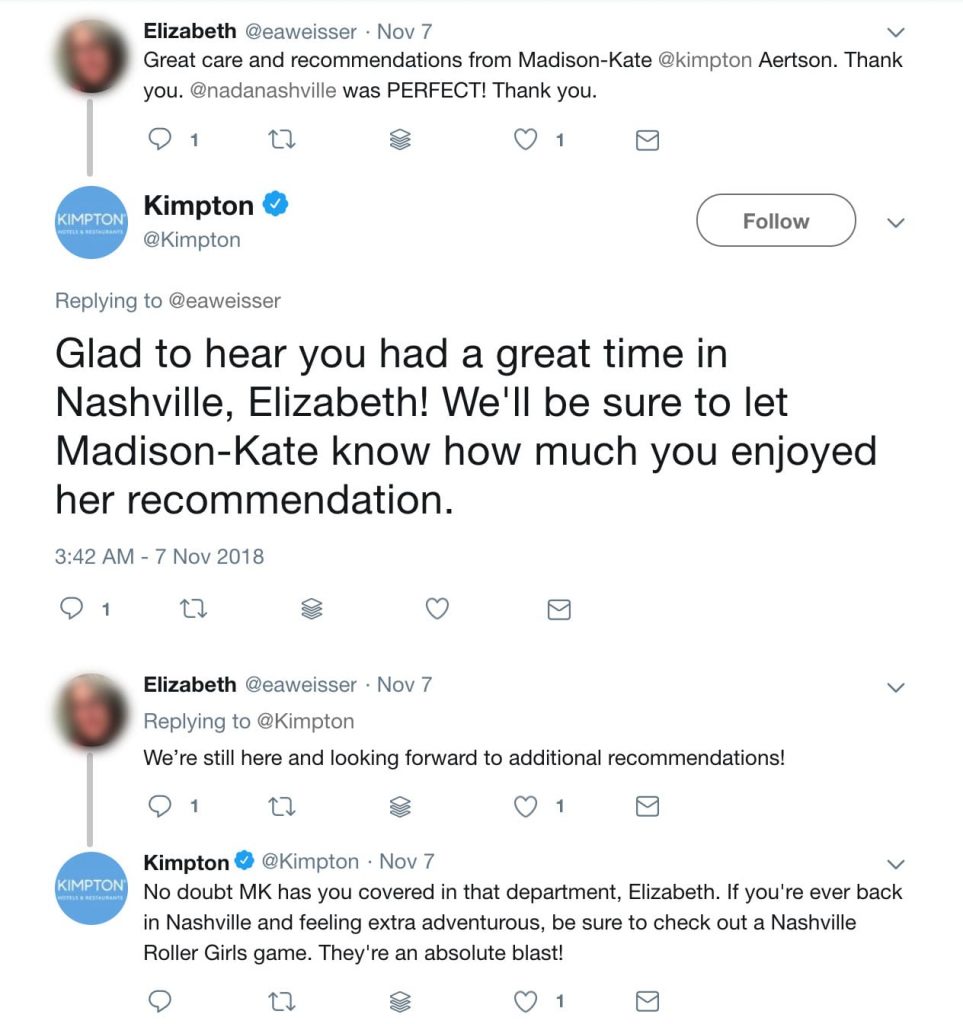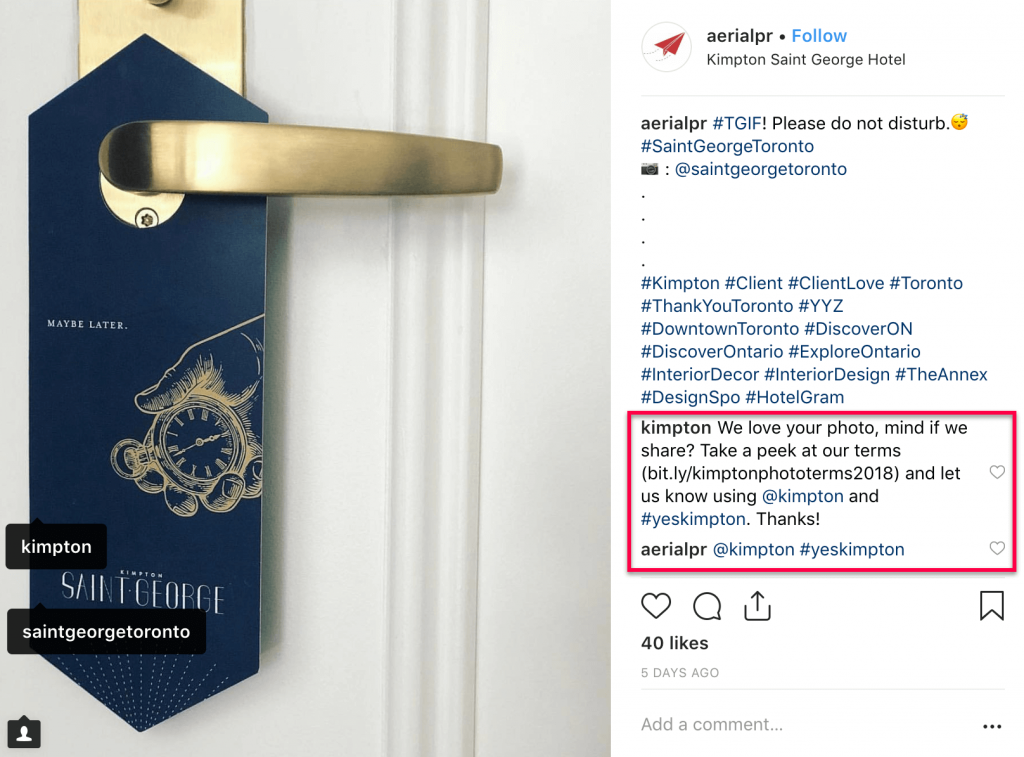 According to recent research, approximately 80 percent of customers are more likely to continue doing business with a brand that offers a more personalized experience. Incorporating this strategy also applies to social media because today’s audience desires to interact with brands on a more personal level. So how do we go about implementing personalization in our companies and on social media? Ultimately implementing this feature and similar techniques will help increase profit, which is what we discuss in our free webinar training. Responding to a customer can build rapport and hopefully encourage customers to continue purchasing products.
According to recent research, approximately 80 percent of customers are more likely to continue doing business with a brand that offers a more personalized experience. Incorporating this strategy also applies to social media because today’s audience desires to interact with brands on a more personal level. So how do we go about implementing personalization in our companies and on social media? Ultimately implementing this feature and similar techniques will help increase profit, which is what we discuss in our free webinar training. Responding to a customer can build rapport and hopefully encourage customers to continue purchasing products.
Buffer mentioned Kimpton hotel as an excellent example of how personalization can make all the difference. Responding to a customer can build positive rapport and perhaps even encourage them to come back again.
For example, when one customer tweeted about the great in-person experience they’d received at a Kimpton hotel in Nashville, its social team continued that experience by sharing an additional recommendation to enhance the customer’s stay:
While technology plays a part behind-the-scenes, Kimpton’s social media personalization strategy is powered by humans — and Whitney sees the team as the most important part of this strategy.
Kimpton’s social media engagement is handled by its Social Listening Desk, a team that responds to social chatter 24/7/365 across all its social channels.“For our social media team, it’s really about finding the right people from the start – the ones who innately go out of their way to connect with each person, and get a real kick out of doing it.”
The Social Listening Desk team are also encouraged to go out of their way to make people feel special in each message:
“If there’s an opportunity to make someone’s day by really personalizing an interaction, our Listening Desk is empowered to act on it. We even have a mechanism for surprising and delighting our followers that anyone on our social team can activate as they see fit.”
Buffer also provides yet another example from Kimpton hotel and discusses why interacting and thanking customers for posting pictures of their stay at the hotel can improve their business. If you do the same for your business, you too may accrue more customers.
As a business that puts so much focus on its customers, user-generated content also has a huge role to play in Kimpton’s strategy — both across social media and its website.
“We’re fortunate to have hundreds of beautiful guest photos coming in via hashtags, geo-tags, and mentions each day from our 148 hotels and restaurants,” Whitney explained. “We love that, often, a guest’s first instinct is to pull out their camera phone and post a picture of their experience to Instagram or Twitter, and we don’t take it for granted.”
To encourage more sharing, and reward those customers who do share their Kimpton experiences on social media, the Social Listening Desk team will ‘Like’ posts featuring their hotels and restaurants.
But to take things a step further, Whitney encourages the team to comment on guests’ photos to thank them for posting, often calling out a specific detail of the photo that they loved. And sometimes, they’ll ask to repost their favorite content:
A broad aspect of bringing in more personalization is by knowing and targeting your audience. Huffington Post mentions why this is so important and how you can make the time to do this:
Social media platforms are becoming incredibly segmented. So trying to create homogenous content that will perform well across all channels is a herculean feat that typically doesn’t deliver the intended result. Only once you truly know your target audience can you better identify the types of content that will appeal to them and which social media channel will be most instrumental in helping you reach them.
If you were the owner of the skateboard company referenced above, you would probably want to distribute your personalized content through Facebook, Snapchat and Instagram, since all three are popular with teens and millennials, where visual imagery like videos and pictures perform well.
If you had taken the time to properly identify your target audience, you may have considered sending out video invitations to people to test your new skateboard for free, which would’ve been limited to people you had identified as most likely to respond to test-run events based on surveys, questionnaires and/or comments on social media posts. In this particular example, personalization would target a group that is highly motivated to test out a new skateboard, which, in turn, would increase the likelihood of them raving about their experience through social media. And don’t forget about the bonus here: Exclusive invitations would make each recipient feel much more connected to your brand.
According to Social Media Today, engaging in fun trendy strategies is an excellent way to add a personal touch. Taking advantage of these strategies can also help your customers feel more engaged.
Another amazing way to add that personal touch is to follow trends like “Follow Friday” on Twitter or do a “Throwback Thursday” post. This adds such a fun element to social media and helps you engage with your followers. You can do a follow Friday for industry leaders or the sites you use for resources. You can highlight various things with fun, little trends and end up getting a huge response. Never underestimate the power of a trend! In addition, you should always be prepared to learn new trends in social media so that you can stay on top of things and not be stuck doing “old,” outdated things.
Social Media Today also mentions giving your customers something in return for following or liking your photo, for example. Giving random giveaways, discounts and points can help people feel more in touch with your brand and excited to learn more.
You can also add a personal touch by giving more than you receive, or at least seeming like you're giving a lot! Let's look at an example to properly explain this. Adagio Teas is a great place to get loose-leaf tea and blends based off of popular fandoms like Doctor Who or Sherlock. In order to keep a strong, dedicated fan base, Adagio regularly gives out discounts and points. When you make an order, you can get 5% off of the order by simply sharing a gift card on Facebook or Twitter. You can get points for sharing gift cards and having people use them, and can even get points by simply mentioning the company on Twitter. Want more points? Write a review and post it to their Facebook!
Anything you do gets you points, which can then be used to create a gift card to give you the chance to purchase your favorite teas with a decent discount. More people are willing to spend $50 at Adagio when they get that $10 or $20 gift card and Adagio doesn't end up losing that much money, in the end. Think of something similar that can help you out while also helping your customers out! Notice, Adagio Teas utilizes social media majorly in their points program.
Wondering how you can use social media sites such as Pinterest to your advantage? Marketo gives us the scoop on how interactive shopping on Pinterest can make all the difference:
Pinterest just announced a series of new tools, which they’re looking to launch in the next few months, that aim to personalize the shopping experience on their mobile app. These tools will give users the ability to take a photo of an object (think of that amazing hotel you stayed at in Maui), and Pinterest will essentially aggregate a list of recommendations, taking into consideration the style and features within the photo.
Talk about the ultimate personalization experience! These new updates will give your buyers all of the information they want at their fingertips. With a quick snap of a photo, the research is done for them, and an algorithm will show them exactly what they’re looking for. For marketers, I can see this becoming an important channel for search optimization, similar to Google. You’ll want to make sure your keywords and descriptions are relevant to what your audience is looking for.
But, Pinterest didn’t stop there! As the company stated on its engineering blog, “Since an image can contain dozens of objects, we wanted to make it as simple as possible to start a discovery experience from any of them.” If there are multiple objects in your photo, you can easily tap a visual search icon (located at the top of the pin), expanding dots on all of the individual items within the pin to display further information about the individual products. Then, just click purchase and you’re on your way to looking like a million bucks! Think about the infinite possibilities for product placement. Brands will now be able to place multiple products in one, simple post.
These social media changes are just a few of what will continue to pop us as platforms continue to change and improve their audience’s experience. Implementing personalization into your social media strategy and business can do wonders for your company. We further discuss how similar techniques can increase profit and help you succeed in our free webinar training.
Sources: Buffer, Huffington Post, Marketo, Social Media Today
CHALLENGE Yourself to Profit!
Free Download: Build Your Profit-Generating Online Business With This Free Blueprint
Sign Up, follow the easy steps and You'll get the tactics, strategies & techniques needed to create your online profit stream. It's free!





